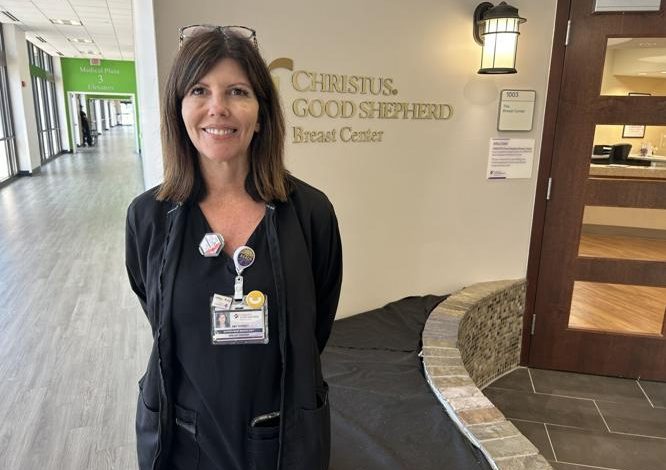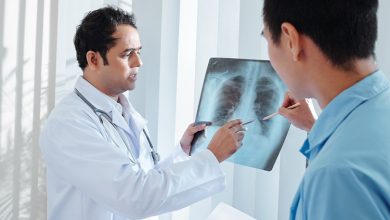Christus Health’s Breast Cancer Awareness Drive: The Truth About Early Detection

October brings pink ribbons, fundraisers and a flood of messages about breast cancer — and for good reason. Early detection saves lives. CHRISTUS Health, a major health system with hospitals, mobile units and community programs across the U.S., runs an annual awareness push centered on screening, education and access. But beyond the slogans and social posts, there are practical truths about what early detection really means, who benefits, and how people can act — right now. This article unpacks CHRISTUS Health’s breast cancer awareness activities, explains the evidence behind early detection, dispels common myths, and gives clear, actionable steps for individuals and communities.
What CHRISTUS Health is doing (and why it matters)
Each October, CHRISTUS Health emphasizes mammography and breast health in communications, community events, and — increasingly — through mobile mammography and targeted outreach to underserved communities. The system’s public-facing materials and local news reports highlight that mammograms are an effective tool for finding cancers when they are small and most treatable, and that mobile units and renovated imaging centers help reach people who otherwise might delay screening.
Beyond one-off promotions, CHRISTUS maintains breast imaging services (including forms to request a mammogram) and information about 3-D (tomosynthesis) mammography at many sites, and partners with its foundation and community clinics to provide low-cost or free screenings for uninsured patients. These programs make a difference when access or cost would otherwise be barriers to screening.
Why this organizational action matters: breast cancer is common, and early-stage detection often affords simpler, more effective treatment. Health systems that combine outreach, modern imaging and financial support can increase screening uptake — and that’s precisely what CHRISTUS aims to do during its awareness drive.
The evidence: how early detection changes outcomes
The core scientific point is straightforward: many breast cancers are easier to treat and have better outcomes when found early. Screening mammography detects abnormalities in breast tissue before they cause symptoms, which allows for earlier interventions and, in many cases, less aggressive treatment.
Key facts you should know:
- Screening mammograms reduce the chance that cancer will be found at an advanced stage, and when treated early, many breast cancers are highly curable. CHRISTUS and other cancer centers consistently point to mammography as “one of the most powerful tools” for early detection.
- Newer imaging technologies such as 3-D mammography (tomosynthesis) can improve detection rates and reduce false alarms in some populations, and CHRISTUS lists 3-D mammography among available services.
Important nuance: screening is targeted at asymptomatic people (those without lumps, nipple changes, or new pain). If you have symptoms, you need diagnostic evaluation regardless of when your last screening happened.
Common myths about early detection — and the truth
Myth 1 — “Mammograms cause cancer because of radiation.”
Truth: Modern screening mammograms use very low doses of radiation; the risk from this tiny exposure is far outweighed by the benefit of detecting a potentially life-threatening cancer early. Health systems including CHRISTUS emphasize screening because the benefit/risk balance is strongly in favor of screening for recommended age and risk groups.
Myth 2 — “If I feel fine, I don’t need a mammogram.”
Truth: Many breast cancers do not cause symptoms in early stages. Mammograms are designed to find cancers before they produce symptoms — which is why routine screening matters.
Myth 3 — “I’m young, so I don’t need screening.”
Truth: Routine population screening recommendations typically start at age 40 or 50 depending on guideline chosen and individual risk, but people with a strong family history or genetic predisposition may need earlier surveillance and should discuss personalized plans with a provider. CHRISTUS materials highlight starting regular mammograms around age 40 while noting individualization for higher-risk people.
Myth 4 — “A normal mammogram means I’m safe forever.”
Truth: A normal mammogram reduces immediate concern but doesn’t eliminate future risk. That’s why routine repeat screening at recommended intervals is important.
Who should get screened — brief, practical guidance
Screening recommendations vary by guideline body (e.g., U.S. Preventive Services Task Force, American Cancer Society). A simple way to think about it:
- Average risk: talk to your clinician about starting regular screening in your 40s; many systems (including CHRISTUS) recommend beginning routine mammography around 40 and continuing every 1–2 years depending on age and findings.
- Higher risk (family history, known genetic mutation such as BRCA1/2, prior chest radiation, certain benign breast diagnoses): earlier and more frequent screening may be necessary, and additional tools like MRI might be recommended. Discuss an individualized plan with a breast specialist.
If cost, transportation, or lack of insurance is a barrier, look for mobile mammography units, hospital-sponsored free screening days, or foundation programs. CHRISTUS Foundation and affiliated clinics have programs to provide access to uninsured patients, and the health system advertises mobile mammography outreach during awareness campaigns.
How CHRISTUS Health’s awareness drive helps people take action
Awareness campaigns are valuable only if they convert attention into action. CHRISTUS’s October efforts typically include:
- Public messaging encouraging mammography as a quick, life-saving test. (“A mammogram only takes about 20 minutes, but it could add years to your life,” reads recent outreach.)
- Educational events and survivor-centered programming that explain signs, risk factors and the screening pathway.
- Mobile mammography units and community screenings aimed at reaching people who cannot easily travel to a hospital, plus financial assistance pathways for uninsured patients through the CHRISTUS Foundation.
- Investment in imaging upgrades like 3-D mammography to improve diagnostic accuracy where possible.
These combined strategies — education, access, and technology — work together to reduce barriers and improve the chance that cancers are found early.
What to expect at a mammogram (so fear doesn’t delay you)
Fear and uncertainty are common reasons people delay screening. Here’s a quick, practical walkthrough to make the visit less intimidating:
- Appointment & check-in: Most mammography appointments are scheduled ahead; many centers, including CHRISTUS imaging departments, have online forms or phone lines to request scheduling.
- The procedure: A mammogram usually takes about 15–20 minutes. The technologist positions each breast on a plate and applies brief compression for a few seconds while the X-ray is taken. Discomfort is common but short-lived.
- Results: If the screening is normal, you’ll be advised when to return for your next interval screen. If there’s an area of concern, you may be asked to return for additional imaging (diagnostic mammogram or ultrasound) or be referred to a specialist. Early detection increases treatment options.
If anxiety is severe, bring a friend or family member for support, or tell the technologist — they are experienced in helping patients remain comfortable.
Addressing disparities: why mobile units and financial assistance matter
One of the clearest truths about early detection is that it’s only effective if people can access screening. Financial hardship, lack of local imaging centers, and transportation are common barriers. CHRISTUS’s community initiatives — mobile mammography units, free screening events and foundation support — specifically aim to lower these barriers for underserved groups. Such outreach helps catch cancers in communities that otherwise might present at later stages.
If you or someone you care for lacks insurance, don’t delay asking about community programs. Many hospitals and foundations provide vouchers, low-cost options, or free mobile screenings — especially during Breast Cancer Awareness Month.
Beyond mammograms: what else supports early detection and better outcomes
Early detection is not only a screening test; it’s a system of care and personal habits:
- Know your baseline: become familiar with how your breasts normally look and feel so you can report changes promptly.
- Keep routine care appointments: preventative care visits are a chance to discuss personalized screening timing and risk.
- Healthy lifestyle: while not a substitute for screening, maintaining a healthy weight, limiting alcohol, exercising and avoiding tobacco can reduce breast cancer risk.
- Genetic counseling/testing when indicated: if a strong family history exists, genetic counseling may alter the screening plan and enable risk-reducing strategies. CHRISTUS breast services and cancer centers provide resources for diagnosis and personalized treatment planning.
Real stories, real impact
Stories from survivors and community events often power awareness campaigns because they make abstract statistics tangible. CHRISTUS outreach has featured survivors who speak at events and volunteer to comfort patients, and local news pieces highlight these human angles — both to encourage screening and to reduce fear. Personal experiences can be powerful motivators for neighbors and family members to schedule their mammograms.
Clear steps you can take today
- Check when your last mammogram was. If you’re due (or overdue), schedule one — many CHRISTUS locations offer online request forms and phone scheduling.
- If you lack insurance or have difficulty traveling, call local hospital outreach or the CHRISTUS Foundation to ask about mobile units or low-cost options. Programs often ramp up during October but many operate year-round.
- Talk to your primary care clinician about your individual risk and whether you should start screening earlier than the general population.
- Share the message with friends and family. A local push — a group appointment or ride share — can help people who might otherwise delay screening.
- If you find a lump or unusual change, seek diagnostic evaluation immediately — do not wait for your next routine screen.
Measuring success: what to watch for in an awareness campaign
A good awareness drive does more than generate impressions — it should lead to measurable increases in screening uptake, reach underserved populations, and connect people to navigation services when follow-up is required. CHRISTUS’s use of mobile mammography, imaging upgrades and foundation support are the operational pieces that can translate awareness into outcomes. When health systems report increased screening numbers, reduced time from abnormal screen to diagnostic workup, and engagement with uninsured populations, those are signs the campaign is doing the heavy lifting it intends.
Final thoughts: early detection is a team effort
Christus Health’s breast cancer awareness drive combines public messaging, upgraded technology, community outreach and financial assistance to make early detection possible for more people. But the final step rests with individuals and communities: scheduling that mammogram, asking tough questions about family history, helping neighbors overcome barriers, and showing up for follow-up when needed.
If you are reading this during October or any other month, consider it your practical reminder: it takes only minutes to get a screening that could change the arc of a life. Reach out to your local CHRISTUS imaging center or community clinic to learn about screening options in your area — and if cost or access feels like a barrier, ask about mobile units or foundation programs that exist precisely to help people get the care they need.




